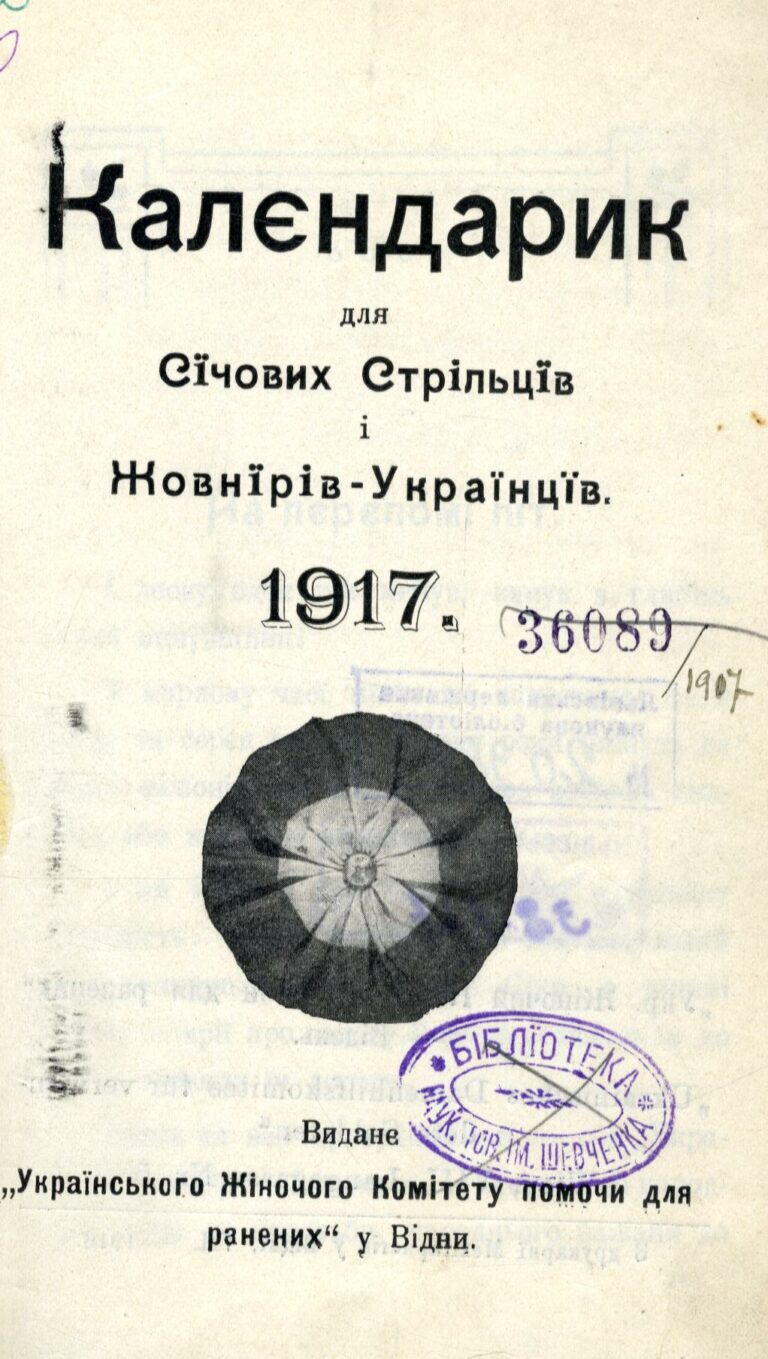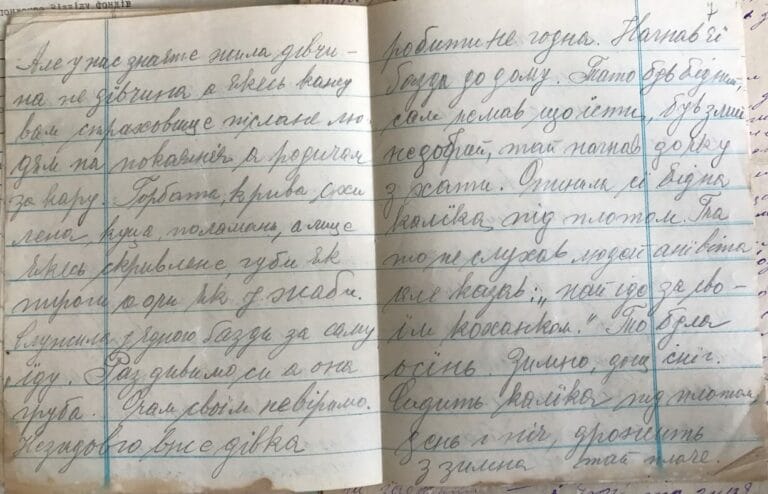Oh, in the meadow blooms the red viburnum,
Why does our beloved Ukraine wear a somber veil?
Yet, we shall raise that crimson viburnum high,
And bring joy to our cherished Ukraine’s heart.
The Sich Riflemen march to the rhythm of battle’s beat,
To break free our Ukrainian brethren from Moscow’s grasp.
We’ll set our kinfolk free, our Ukrainian brothers,
And bring joy to our cherished Ukraine’s heart.
Oh, in the fields of golden wheat, under the spring’s embrace,
Our riflemen started a dance with the Muscovites.
We’ll reap the harvest of that golden wheat,
And bring joy to our cherished Ukraine’s heart.
When the winds sweep from the vast steppes,
Echoing the glory of the Sich Riflemen through our land.
We’ll uphold the honor of the Sich Riflemen’s legacy,
And bring joy to our cherished Ukraine’s heart.





This source is an audio recording of the folk version of the one of the most popular Ukrainian resistance songs. It is known by various titles: “The rifleman’s Anthem,” [Cтрілецький гімн] “The song of the viburnum,” [Пісня про калину] or “Oh, in the meadow blooms the red viburnum” [Ой у лузі червона калина]. The song’s worldwide spread was facilitated by the performance of Andriy Khlyvnyuk, the lead singer of the Boombox band, who on February 28, 2022, the fourth day of Russia’s full-scale attack on Ukraine, sang only the first stanza of the song. His performance on St. Sophia Square in Kyiv led to the emergence of remixes. Among the many performers are South African musician David Scott of The Kiffness and the rock band Pink Floyd (“Hey! Hey! Rise Up!”).
The history of the song is long and fascinating. It originates from the song “Steep banks spilled out, hey, hey, in the vastness,” [Розлилися круті бережечки, гей, гей, на роздоллі] which recounts the events of the mid-seventeenth century and the Ukrainian national liberation war led by Hetman Bohdan Khmelnytskyi. The first recording was made in the second half of the nineteenth century in the southern Ukrainian village of Marianivka (then in the Kherson province of Yelisavetgrad district). Presently, this village is under Russian occupation. In 1913, the theater director Stepan Charnetskyi (1881-1944) incorporated the final fragment of this ancient song into the play “The Sun of Ruin” [Сонце руїни] (1911). Originally, in Vasyl Pachovskyi’s play, the army choir was meant to sing a different song, “Hey, don’t be surprised, good people” [Гей не дивуйтесь, добрії люди]. S. Charnetskyi introduced his own text, which began “Oh, in the meadow blooms the red viburnum.” The theater conductor Mykhailo Kossak (1874-1938) arranged the melody, which also stemmed from a folk song.
The play, which reenacts the history of the heroic and tragic era of the Cossack Ruin, was successfully staged at the Lviv theater of the Ruska Besida Society and in various cities of Eastern Galicia. In September 1914, at the outbreak of the First World War, the play was performed in the city of Stryi. During this time, Hryhorii Trukh (1894-1959), a commander of a riflemen’s unit and a poet by calling, heard the song. Captivated by the melody and the poetic imagery of the bent viburnum, symbolizing Ukraine, Trukh composed three new stanzas. Thus, another version of the song emerged. The central theme of the “riflemen’s” rendition of the song is the struggle for liberation and the clash between Ukrainian volunteers (the USS Legion) and the Russian Imperial Army (“the Muscovites”). The author employed archaic epic symbolism, wherein the battle is likened to a “dance” (the poetic “tan”), and victory is depicted as a “harvest” (“We’ll reap the harvest of that golden wheat”):
Oh, in the fields of golden wheat, under the spring’s embrace,
Our riflemen started a dance with the Muscovites.
We’ll reap the harvest of that golden wheat,
And bring joy to our cherished Ukraine’s heart.
In 1915, the lyrics and melody of the song were first published in the collection Seven Songs for Soldiers [Сім пісень для вояків], released in Vienna. Ivan Boberskyi (1873-1947), a member of the Ukrainian Insurgent Army’s Military Administration, stated that during the war, this song “articulated the mission of liberation and counterbalanced all the sorrowful songs with its hope for a brighter future.”
After the First World War, the song gained popularity not only through musical arrangements performed by various male and female choirs but also due to its profound symbolic significance. The red berries of the viburnum, resembling drops of blood, have long been a symbol of Cossack bloodshed among Ukrainians. This traditional imagery is present in various works of Ukrainian folklore, appearing in carols and wedding songs. In ballads depicting family life, the viburnum symbolizes premature death and serves as a symbol of a young person’s burial place. In Cossack ballads, a blossoming bush also signifies the grave of a hero and is a sacred plant symbol to which a messenger bird or a human soul gravitates.
The song “about the viburnum” and “glorious Ukraine” was frequently sung during the interwar period by Galician intellectuals, students, and peasants. It was during this time, in the 1920s and 1930s, that the singer learned it from her mother. In Soviet times, the song was banned. Today, as a new myth of “Ukraine,” this song shapes Ukrainian national identity for many adults and children. The largest performance of this song in Lviv in June 2022 was included in the Guinness World Records.